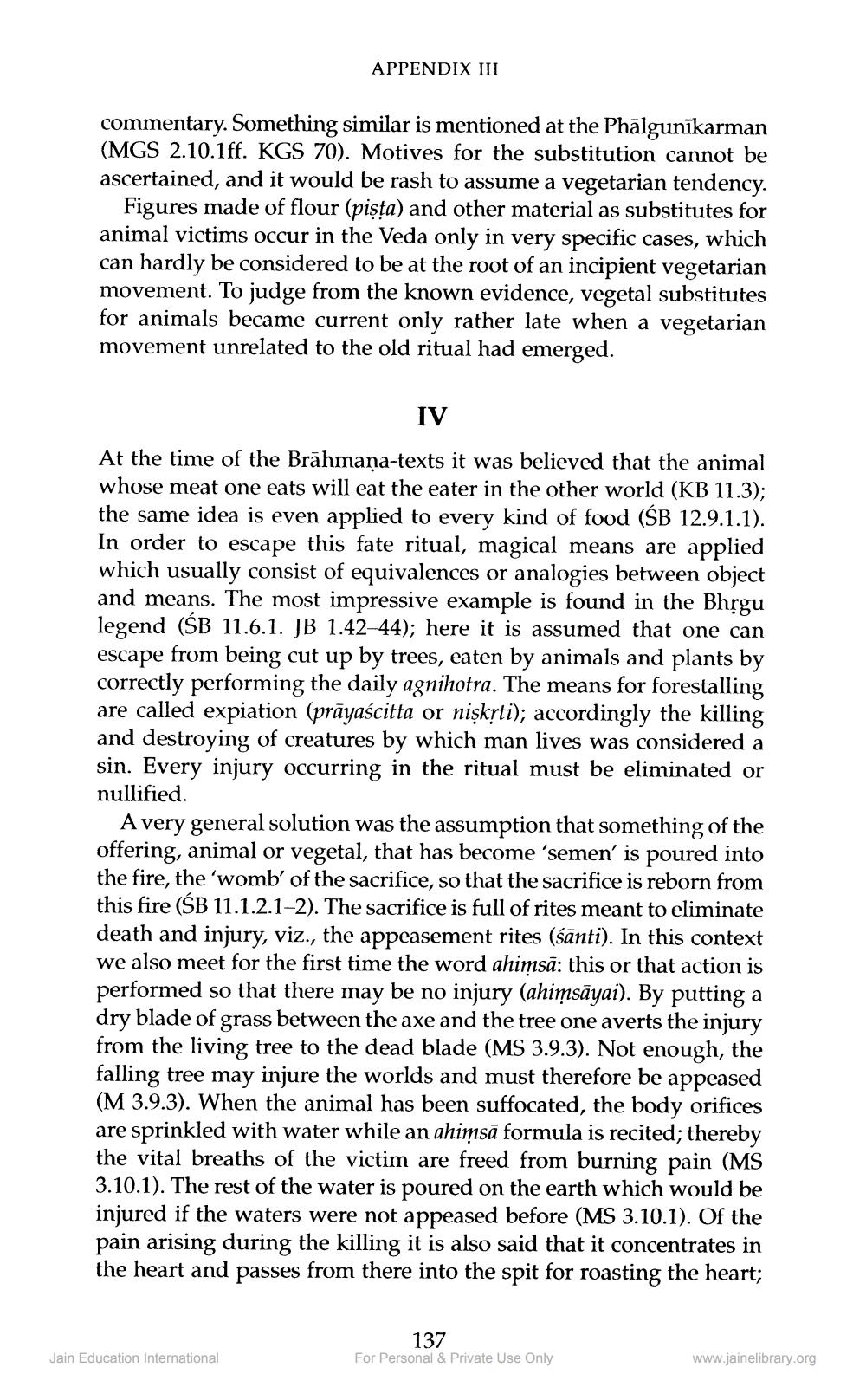________________
APPENDIX III
commentary. Something similar is mentioned at the Phālgunīkarman (MGS 2.10.1ff. KGS 70). Motives for the substitution cannot be ascertained, and it would be rash to assume a vegetarian tendency.
Figures made of flour (pista) and other material as substitutes for animal victims occur in the Veda only in very specific cases, which can hardly be considered to be at the root of an incipient vegetarian movement. To judge from the known evidence, vegetal substitutes for animals became current only rather late when a vegetarian movement unrelated to the old ritual had emerged.
IV
At the time of the Brahmana-texts it was believed that the animal whose meat one eats will eat the eater in the other world (KB 11.3); the same idea is even applied to every kind of food (SB 12.9.1.1). In order to escape this fate ritual, magical means are applied which usually consist of equivalences or analogies between object and means. The most impressive example is found in the Bhrgu legend (ŚB 11.6.1. JB 1.42-44); here it is assumed that one can escape from being cut up by trees, eaten by animals and plants by correctly performing the daily agnihotra. The means for forestalling are called expiation (prāyaścitta or niskrti); accordingly the killing and destroying of creatures by which man lives was considered a sin. Every injury occurring in the ritual must be eliminated or nullified.
A very general solution was the assumption that something of the offering, animal or vegetal, that has become 'semen' is poured into the fire, the 'womb' of the sacrifice, so that the sacrifice is reborn from this fire (SB 11.1.2.1-2). The sacrifice is full of rites meant to eliminate death and injury, viz., the appeasement rites (śānti). In this context we also meet for the first time the word ahimsā: this or that action is performed so that there may be no injury (ahiņsāyai). By putting a dry blade of grass between the axe and the tree one averts the injury from the living tree to the dead blade (MS 3.9.3). Not enough, the falling tree may injure the worlds and must therefore be appeased (M 3.9.3). When the animal has been suffocated, the body orifices are sprinkled with water while an ahimsā formula is recited; thereby the vital breaths of the victim are freed from burning pain (MS 3.10.1). The rest of the water is poured on the earth which would be injured if the waters were not appeased before (MS 3.10.1). Of the pain arising during the killing it is also said that it concentrates in the heart and passes from there into the spit for roasting the heart;
137 For Personal & Private Use Only
Jain Education International
www.jainelibrary.org




